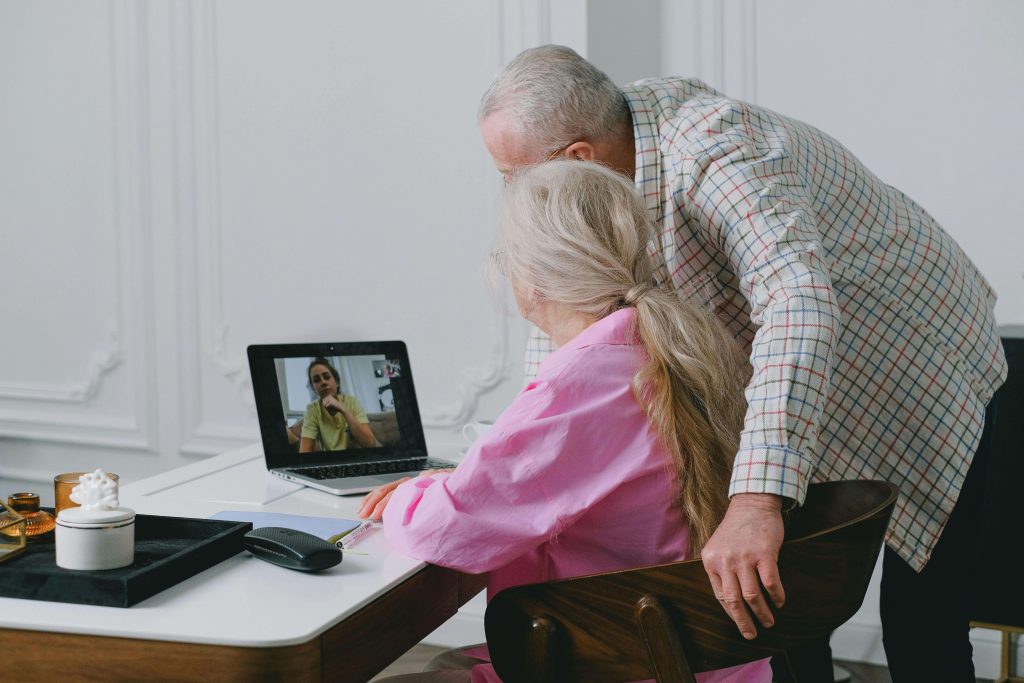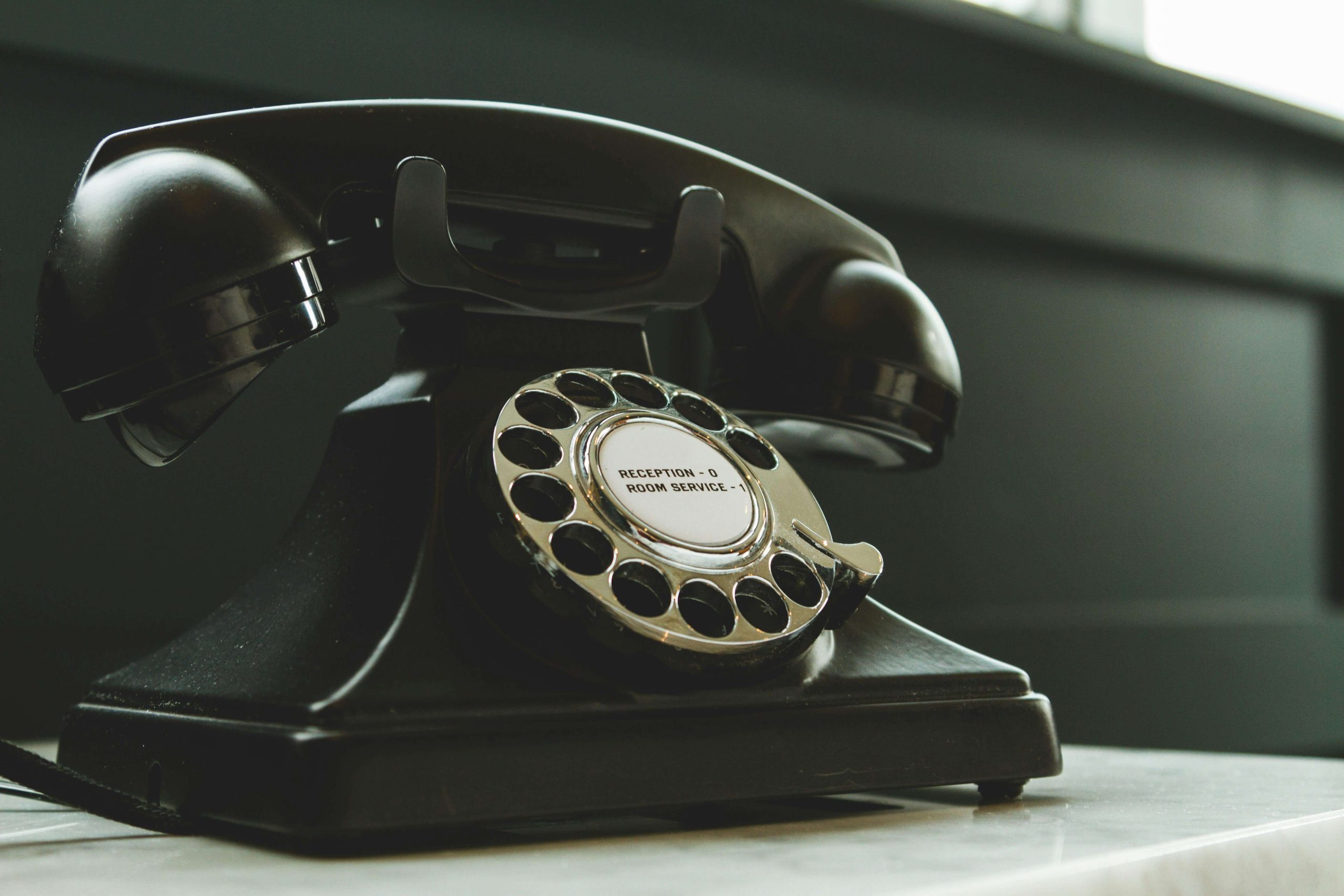Remember When Long-Distance Meant a Phone Call?
If you grew up in the 1970s or 1980s, “long-distance” was something you thought about every time you picked up the phone. Calling Aunt Mary in California or checking on a college roommate across the country came with a reminder from your parents: “Keep it short, it’s long-distance!” The static on the line and the ticking clock of the phone bill made every word count.
Today, “long-distance” has a different meaning, especially for Gen Xers and Boomers who are caring for aging parents or loved ones. It’s not just about the miles on the map—it’s about the emotional distance, the worry, and the guilt that comes with not being there in person. Many of us are raising children, managing careers, and suddenly juggling the needs of parents who may live in another city, or even another state.
Managing a senior’s care from afar is challenging, but it is possible with the right systems, support, and mindset. Let’s break it down.
The Challenges of Long-Distance Caregiving
Caring from a distance is different from living down the street. It comes with its own set of unique challenges:
- Limited visibility – You can’t “drop by” to notice changes in mood, mobility, or memory.
- Emotional strain – Guilt, worry, and helplessness can weigh heavily when you can’t be there daily.
- Logistical hurdles – Coordinating appointments, medications, and services takes extra effort across time zones or busy schedules.
- Family dynamics – When siblings live closer, disagreements about responsibilities or decisions often arise.
Many Gen X and Boomer caregivers find themselves in the “sandwich generation,” squeezed between raising children and caring for parents. It’s not easy, but you’re not alone. According to AARP, more than 11% of family caregivers live more than an hour away from the person they’re caring for.
Step One: Get Organized Like It’s the 3-Ring Binder Days

Before smartphones, many of us managed our lives with a Rolodex or a trusty three-ring binder. That same principle applies today: caregiving starts with organizing the essentials.
Here’s what to gather:
- Medical information: Diagnoses, medications, allergies, and physician contacts.
- Legal documents: Power of attorney, advance directives, and insurance details.
- Emergency contacts: Neighbors, friends, clergy, and local services.
- Daily routines: Meal preferences, mobility aids, exercise, and social activities.
Pro tip: Create both a physical folder (for siblings, neighbors, or local helpers) and a digital backup (securely stored and shared with those who need access).
Step Two: Embrace Technology

Remember when programming the VCR felt like rocket science? Today’s tech is far more powerful—but also more user-friendly if you know where to start. Technology can be your lifeline for long-distance caregiving.
- Video calls: Zoom, FaceTime, or Google Meet allow you to “see” your loved one, notice subtle changes, and share a smile.
- Medication apps: Tools like Medisafe or MyTherapy send reminders and track doses.
- Remote monitoring: Smart sensors, fall-detection devices, or wearable watches can alert you if something’s wrong.
- Shared calendars: Coordinate with siblings or caregivers through Google Calendar or CareZone to track appointments.
Think of these tools as the “cordless phones” of today—once you try them, you’ll wonder how you lived without them.
Step Three: Build a Local Care Team

If you can’t be there in person, you need trustworthy eyes and ears nearby.
- Family & friends: Even a neighbor who checks in weekly can make a dramatic difference.
- Community resources: Senior centers, meal delivery programs, and faith-based groups provide valuable local connections.
- Professional caregivers: A reputable home care agency offers trained staff to assist with daily activities, companionship, and safety.
- Geriatric care managers: These professionals coordinate care, attend medical appointments, and provide updates to family members.
Just like in the old days of neighborhood watch programs, caregiving works best when it’s a team effort.
Step Four: Stay Connected Emotionally
Distance doesn’t have to mean disconnection. In fact, many long-distance caregivers find they grow closer to their loved ones when they make communication intentional.
Ways to keep bonds strong:
- Scheduled calls – Make them as regular as “Sunday dinner.”
- Letters and photos – Tangible notes and family pictures can brighten a senior’s day.
- Shared activities – Watch the same TV show or movie and talk about it later. (Yes, you can still laugh about MASH* reruns together!)
- Small surprises – A delivered meal, flowers, or a book can remind them you’re thinking of them.
Step Five: Plan for the “What Ifs”
One of the hardest realities for long-distance caregivers is handling emergencies. A fall, hospitalization, or sudden health decline can happen without warning. Planning ahead reduces panic later.
- Emergency plan: Who will go to the hospital? Who will notify the family?
- Backup caregivers: Have a list of people or agencies you can call on short notice.
- Financial planning: Automate bill payments and review accounts for security.
- Housing options: Explore assisted living or memory care facilities before the need becomes urgent.
As Gen Xers and Boomers, we know the value of being prepared. After all, we grew up practicing fire drills and duck-and-cover exercises. Preparation matters.
Remember to Care for the Caregiver (That’s You)
It’s easy to put yourself last when you’re caring for a parent from afar. But long-distance caregiving takes an emotional toll. If you don’t take care of yourself, you risk burnout.
Practical tips:
- Set realistic expectations: You can’t do everything, and that’s okay.
- Lean on siblings or trusted friends: Share responsibilities fairly.
- Join caregiver support groups: Online communities or local chapters of AARP or Caregiver Action Network provide empathy and advice.
- Practice self-care: Whether it’s exercise, meditation, or simply enjoying your favorite ‘70s or ‘80s playlist, find ways to recharge.
Remember: You’re not just a caregiver, you’re also a spouse, a parent, a professional, and a person. Your well-being matters, too.
A Generational Perspective
Gen Xers and Boomers share a unique perspective. We grew up in an era when families often lived closer, and grandparents were just across town, not across the country. Today, our children may live states away, and many of us are balancing multiple responsibilities.
But we also carry strengths from our era: resilience, independence, and the ability to adapt. If we could navigate the transition from rotary phones to smartphones, we can certainly master the tools and systems to care for our loved ones from afar.
Practical Takeaways
To recap, here are the essentials for managing a senior’s care from long-distance:
- Organize everything: Medical, legal, financial, and daily routines.
- Leverage technology: Use apps, video calls, and remote monitoring.
- Build a local support network: Friends, neighbors, professionals, and community resources.
- Maintain emotional connection: Calls, letters, shared traditions, and small surprises.
- Plan for emergencies: Prepare documents, caregivers, and housing options in advance.
- Care for yourself: Join support groups, share responsibilities, and recharge.
You Don’t Have to Do This Alone
Caring for a parent or loved one from afar is one of the greatest acts of love, and one of the hardest. It takes planning, patience, and persistence. But with the right support, you can ensure your loved one is safe, connected, and living with dignity.
And remember, you don’t have to do this by yourself. Professional home care services can bridge the miles, offering reliable, compassionate, and personalized care when you can’t be there in person.
If you or your loved ones could benefit from dependable home care that understands the needs of families managing care from a distance, contact Happy Mountain Home Care today. Call 954-654-8186 or visit www.happymtn.com to learn how we can help your family find peace of mind, no matter where you are.

